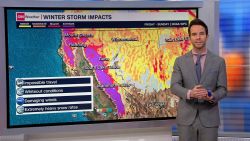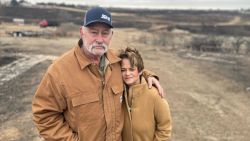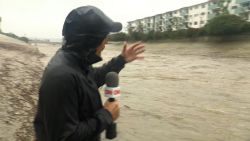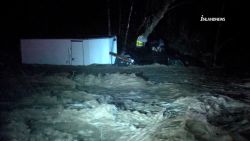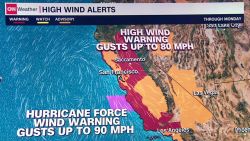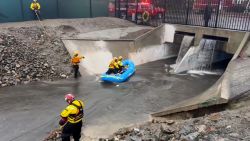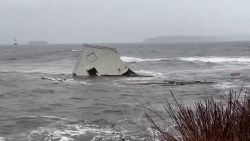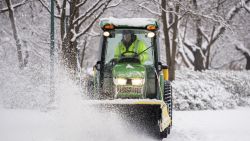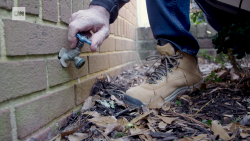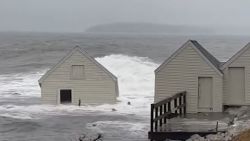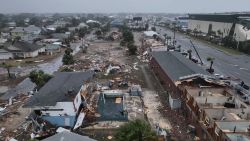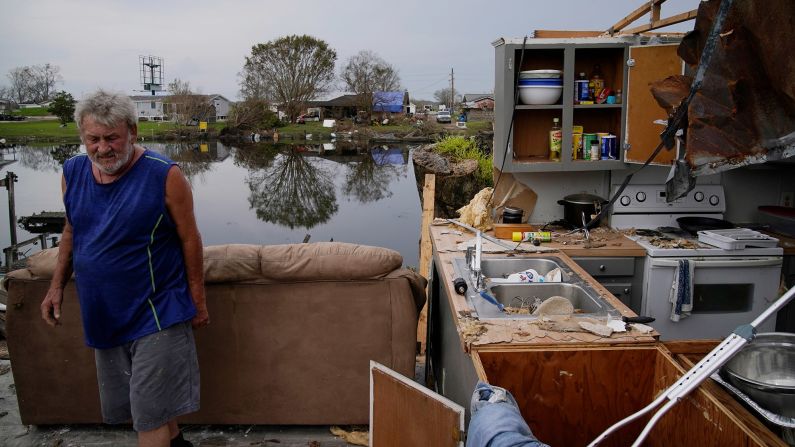At least one person is dead as Hurricane Ida moves inland along the Gulf Coast of Louisiana, officials said Sunday night.
The Ascension Parish Sheriff’s Office said it received reports shortly after 8:30 p.m. CDT of a person injured from a fallen tree in Prairieville, Louisiana, about 18 minutes southeast of Baton Rouge. Deputies arrived and confirmed the victim’s death, the APSO said in a statement on Facebook. It’s the first death reported from the storm.
Ida made landfall earlier Sunday – on the 16th anniversary of Hurricane Katrina – as a dangerous Category 4 hurricane with winds of 150 mph, the National Hurricane Center said. As of 10 p.m. ET, Ida was a Category 2 storm with winds of 110 mph, and its center was about 25 miles west-southwest of New Orleans. It was moving northwest at about 10 mph.
More than one million customers are without power in the region, according to PowerOutage.US, including more than 990,000 in Louisiana and more than 30,000 in Mississippi.
Entergy New Orleans sent out an alert Sunday evening saying the entire Orleans Parish was without power “due to catastrophic transmission damage.” According to city officials, the only power in New Orleans at this time is coming from generators.
All eight transmission lines that deliver power to the city are out of service, Entergy said, adding the power won’t return Sunday night.
The power outage was hindering the operation of sewer pumping stations.
“Currently there is no backup power to operate any of those that were impacted,” the Sewage and Water Board of New Orleans said in a statement to CNN. “We are assessing how many of the 84 stations are impacted but the number may be very significant.”
“In order to prevent sewage backups, we have asked residents to limit water usage at home, thus decreasing the amount of wastewater we must pump and treat,” the statement read.
In Lafourche Parish, Sheriff Craig Webre said every road in the parish is impassable, and agencies are unable to respond to calls for service at this time. There is a curfew already in place for the parish, “and we’re going to set up checkpoints to aggressively enforce that curfew,” the sheriff said.
Officials plan to canvass the parish with every available county employee in the morning, but with the lack of electricity, downed power lines, and scattered debris, Webre doesn’t anticipate any opportunities to clear roadways Sunday night that would allow any travel prior to daybreak.
Archie Chaisson III, Lafourche Parish president, said in a news conference that parts of the parish will be without water “for some part of the forseeable future” after a water main line break.
Sunday night, President Joe Biden granted Louisiana Gov. John Bel Edwards’ request for a major disaster declaration, ordering federal agencies to supplement state and local recovery efforts.
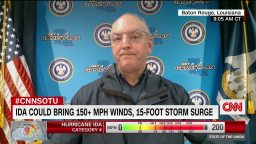
“Hurricane Ida is one of the strongest storms to ever hit Louisiana,” a news release from the governor said. “It is our goal to assist our local agencies and the citizens of the state as quickly as possible, and we have pre-positioned search and rescue teams, boats and other assets to begin helping people as soon as it is safe.”
Ida is now tied with Hurricane Laura from last year and the Last Island Hurricane of 1856 as the state’s most powerful storm ever.
The Louisiana Department of Transportation shut down about 22 miles of Interstate 10 because of fallen trees on the roadway. I-10 is a major thoroughfare connecting the eastern part of the state to the west.
St. Bernard Parish president Guy McInnis told CNN Sunday evening that he has reports of 22 barges that have broken loose in the hurricane.
McInnis says he’s not worried about the barges hitting a levee and damaging it, but he is worried that they may hit other infrastructure in the parish.
Sign up for email updates for significant storms
Edwards urged residents to remain indoors and to be patient, as the state does not know how soon first responders will be able to respond to calls for assistance.
“Once the storm has passed, you need to be prepared to shelter in place for the first 72 hours,” Edwards said. “We have every possible resource ready to go, to help you. We’ll get there sooner than 72 hours if at all possible, in order to rescue people across the state of Louisiana.”
Live updates: Hurricane Ida heads toward the Gulf Coast
By Sunday evening, Hurricane Ida had left 993,000 customers without power in Louisiana, according to poweroutage.us. And Energy Louisiana said some of its customers could be without power for weeks.
The storm’s outer bands also have knocked out power to 31,000 customers in Mississippi, the outage website said.
Ida also caused more than 95% of the Gulf of Mexico’s oil production to shut down, regulators said Sunday, indicating the hurricane is having a significant impact on energy supply.
Relief already headed to Louisiana
Edwards told CNN’s Jake Tapper on “State of the Union” that his state “is as ready as we can be,” but he expects Ida to be “a very serious test of our levy systems, especially in our coastal Louisiana.” He later said the state doesn’t anticipate any overtopping of the Mississippi River levees, or overtopping of the levees in the hurricane risk reduction system around the Greater New Orleans area.
The state invested significantly in shoring up the levy system after the catastrophic failure after Katrina. Edwards said Ida “will be the most severe test,” but he expects the levees to hold. “The next 24, 36 hours are just going to be very, very critical for us here in Louisiana.”
Despite the preparation, Hurricane Ida is causing a levee to overtop on the east bank of Plaquemines Parish between the parish line and White Ditch, according to the New Orleans National Weather Service office.
There are 21 urban search and rescue teams from about 15 states ready to search when the storm calms, Edwards said. The storm is far from over, Edwards warned Sunday night, noting that it hasn’t reached Interstate 10 yet and the expected wind and rain, which could be 20 to 24 inches, is likely to cause further damage in the state.
“Nobody is out of the woods in southeast Louisiana yet. We’ll be dealing with this until sometime after midnight,” Edwards said, adding the full extent of damage won’t be known until the sun comes up.
The Louisiana National Guard has been activated, with more than 4,900 guardsmen staged across 14 parishes. They have 195 high water vehicles, 73 boats and 34 helicopters ready to support and assist residents, the governor said.
Officials throughout the state had implored people to evacuate ahead of the storm, with some issuing mandatory orders to do so.
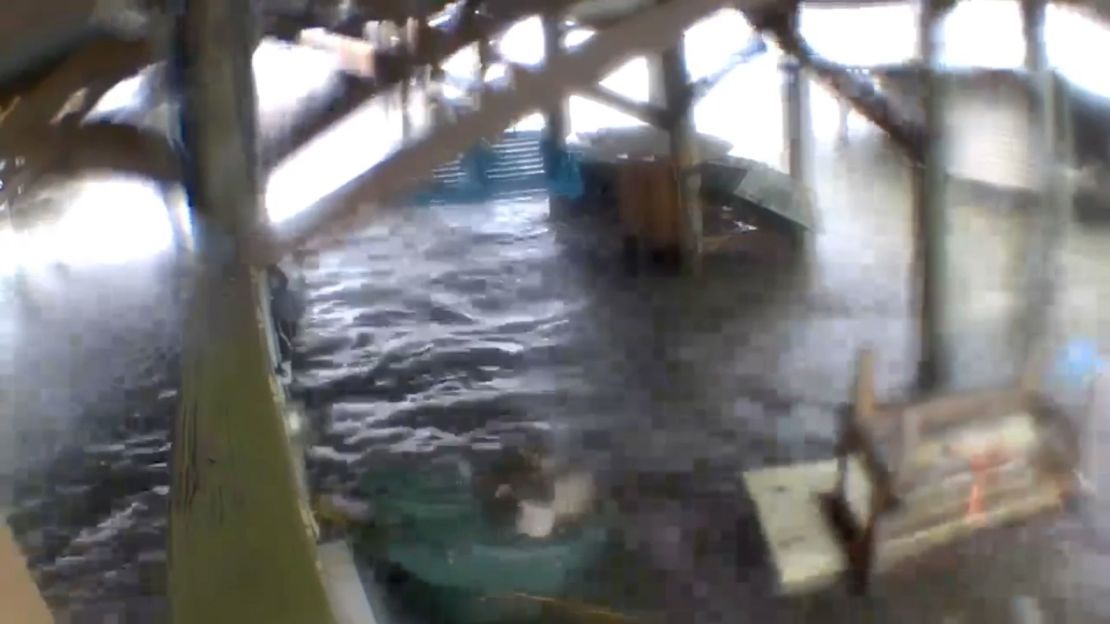
Massachusetts Task Force 1 Urban Search and Rescue Team has been activated and will send an 80-member team to the Louisiana area to assist the residents affected by Hurricane Ida, according to a tweet from the task force Sunday afternoon.
California Gov. Gavin Newsom deployed urban search and rescue personnel to Louisiana to aid in response and recovery efforts Sunday, according to a statement from Newsom’s office.
The team deployed from California was identified as a “Type 3” Task Force from Oakland Fire Department which includes 35 members and 10 ground support personnel.
In New Orleans, Chef Jose Andres and his World Central Kitchen organization set up three kitchens with enough food to serve over 100,000 meals, he said on Twitter Sunday afternoon. The chef left Haiti on Saturday to assemble a team ahead of the storm.
Andres and his team are sheltering in place until the storm passes. He said he’s encouraged by the pre-positioning he’s seen from both the federal government and non-governmental organizations since he arrived in New Orleans on Saturday night.
Once it is safe enough to do so, Andres said, his staff will be operational and make sure the kitchens are stocked.
Lt. Governor says ‘several dozen’ did not evacuate
Louisiana Lt. Gov. Billy Nungesser told CNN by phone Sunday he believes there were “probably several dozen” people who didn’t leave south Plaquemines Parish for Hurricane Ida and intended to ride out the storm.
Nungesser said he was convincing people to leave as late as 11 p.m. Saturday, but those who have stayed behind should be prepared.
“I was telling people if you’re going to stay, put an ax in your attic” because there may not be a chance to look for one once the water begins to rise, Nungesser said. “If it comes up and you’re trapped in an attic, you’ve got to cut your way out to get on the roof.”
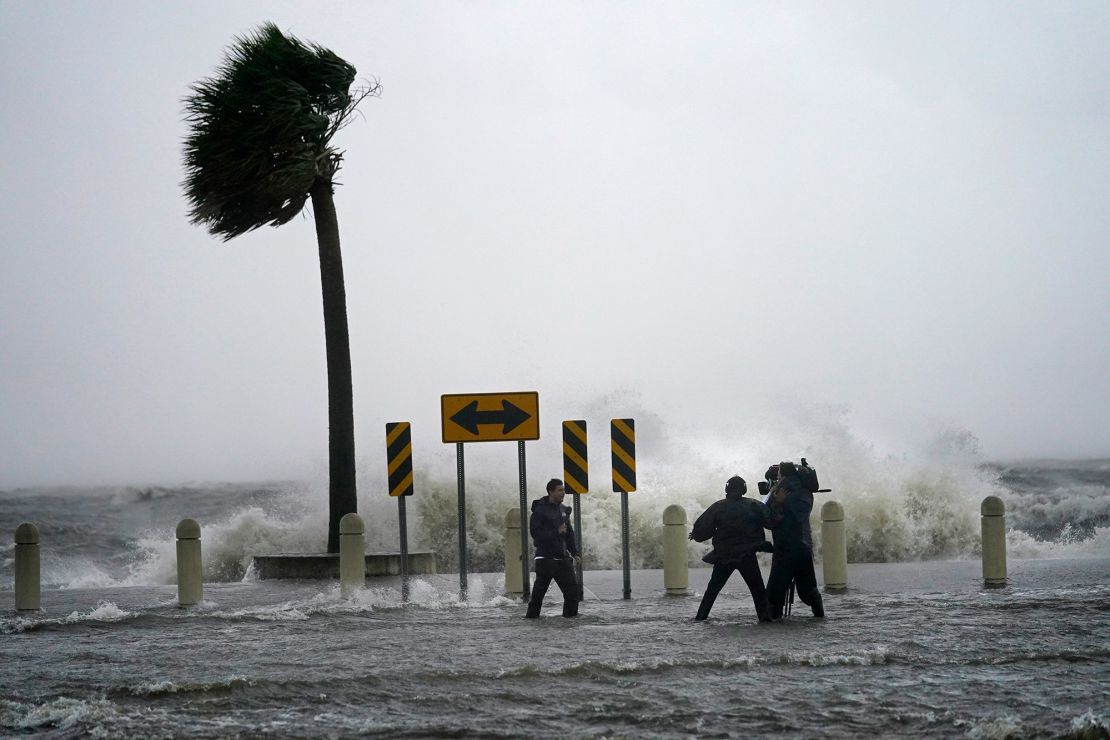
Terrebonne Parish Sheriff Timothy Soignet told CNN Sunday that his office has received “a lot of calls” from people who stayed behind despite the mandatory evacuation order, but they aren’t able to get to everyone due to poor road and visibility conditions amid Hurricane Ida.
Soignet said the parish had initially ordered two zones to be evacuated but then decided to order a full evacuation because of worsening conditions.
People who stayed behind in their homes in Jefferson Parish have called in and reported they have water in their homes up to their chest, Parish President Cynthia Lee Sheng told CNN Sunday night.
“The water is rising. People are in their homes and we’re getting reports of people with water up to their chest,” she said. “They’re asking to be rescued. It’s a very, very dire situation and we just can’t get out yet.”
There are reports of roofs damaged, trees down, tree roots pulling up and damaging water mains, as well as power lines down, according to Sheng.
Sheng said a large transmission tower that fed a majority of the parish also came down, adding that “the electrical grid is almost out,” with approximately 95% of the parish without power.
“I’ve lost contact with some of the most vulnerable areas of the parish,” Sheng said, adding, “I know they just took a beating today for so many hours.”
Ronald Dufrene, a commercial shrimper, planned to stay on his 100-foot shrimp boat in Jean Lafitte, Louisiana, with his wife. He said he’s stayed on his boat for every storm for the last 42 years.
“I rode out three of them last year. Don’t get me wrong. This is a buzz saw we have coming,” he said. “Mother Nature’s a beast.
Joshua Legg, another hurricane veteran, stayed on Grand Isle, Louisiana, to ride out Ida. He posted video on Facebook.
“We’re losing roofs right now,” Legg told CNN.
Legg said his home is safe and he is in a Category 5-rated structure. He said he was a police officer for 15 years and still works with search and rescue efforts to help his community.
Sharlette Landry evacuated Grand Isle, Louisiana, and watched her security camera feeds, which showed water quickly rising before her home lost power Sunday.
“I did prepare, but you can never be prepared for this magnitude of a storm,” Landry, who posted a video on Facebook, told CNN. “I was very surprised at how fast it rose. I’ve never seen it that high and I’m sure it’s higher now at my place.”
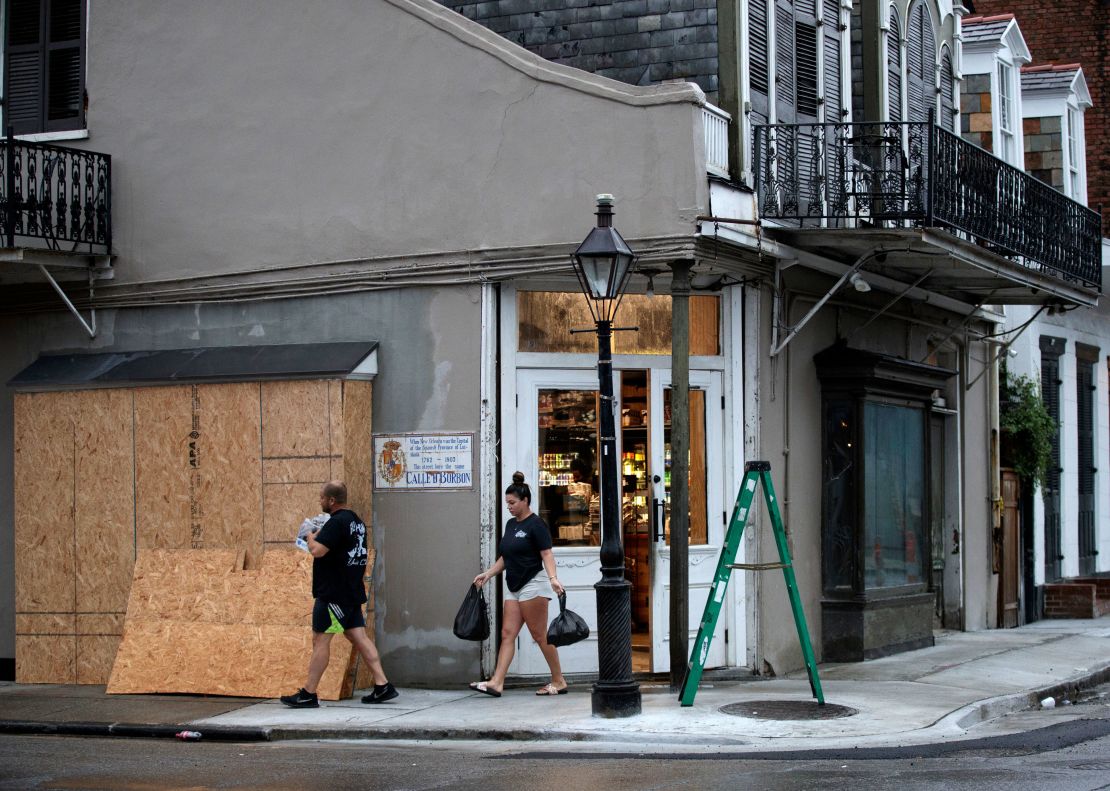
Arlene Mire of Port Vincent, Louisiana, planned to stay home initially. But she knows exactly how high the water must get to breach her home: 11 feet, 3 inches.
“My house has drowned before,” she said. “We’ll lock it up and boogie. We won’t stay in the house when the water comes.”
Ida reversed the flow of the Mississippi River
A tornado watch is in effect until 6 a.m. CDT Monday for parts of Alabama, Florida, Louisiana and Mississippi, according to the Storm Prediction Center. Quick-moving, brief tornadoes will be possible throughout Sunday.
A flash flood emergency has been declared for the south shore area of metro New Orleans, according to the New Orleans National Weather Service office.
The warning is in effect until midnight and includes New Orleans, Avondale, Metairie, Marrero, Harvey, Hahnville, Timberlane, Belle Chasse, Chalmette, Laplace, East New Orleans, Reserve, Jefferson, Gretna, Harahan, Westwego, River Ridge, Waggaman, Elmwood and Bridge City.
Between 4 and 7 inches of rain have fallen producing flash flooding.
Additional rainfall amounts of 3 to 6 inches are possible in the warning area, the NWS said.
A flash flood emergency was also issued for St. Charles Parish and St. John The Baptist Parish, both near New Orleans, until 12:30 a.m. CDT, the NWS in New Orleans said.
Heavy rainfall of up to 10 inches has fallen with additional amounts of 4 to 6 inches expected. “Life-threatening flash flooding is occurring, and this is a particularly dangerous situation,” the NWS said. “Residents are urged to seek higher ground now.”
There were reports Sunday night of people trapped in their homes by rising water in LaPlace, which is in St. John The Baptist Parish, the NWS said. “Water completely surrounding a hotel. Numerous people requesting to be rescued,” the flash flood alert said.
There is also a danger of life-threatening storm surge Sunday in areas along the coasts of Louisiana, Mississippi and Alabama.
Data from the US Geological Survey (USGS) indicated Sunday that the flow of the Mississippi River in New Orleans partially reversed its flow due to the strong storm surge and winds from Hurricane Ida pushing up the river. This is something the USGS says is “extremely uncommon.”
“I remember, off hand, that there was some flow reversal of the Mississippi River during Hurricane Katrina, but it is extremely uncommon,” Scott Perrien, a supervising hydrologist with the USGS Lower Mississippi Gulf Water Science Center in Baton Rouge, Louisiana, told CNN.
In pictures: Hurricane Ida devastates Gulf Coast
Perrien noted that the river level rose about 7 feet due to the storm surge pushing up the river at the USGS gauge, located in Belle Chasse, about 20 miles south of New Orleans in southeastern Louisiana.
“The river is feeling the effects of the storm over a large area, all the way up to Baton Rouge. The river has risen 1.5 feet in the past 12 hours as the surge pushes up the river, and the water level will likely rise more in the coming hours here in Baton Rouge,” Perrien told CNN.
The Mississippi River is now back flowing in the normal direction, though, according to CNN meteorologist Gene Norman.
New Orleans better prepared for Ida, official says
Hurricane Ida is the fourth hurricane to slam Louisiana since last August and the state’s third major hurricane landfall in that time span.
Hurricane Katrina, which hit Louisiana in 2005 as a Category 3 storm with 125 mph sustained winds, had a storm surge up to 24-28 feet, according to the NHC.
The water topped levees and flood walls, and more than 80% of New Orleans flooded. More than 1,500 people in Louisiana died.
Katrina brought storm surge of 15 to 19 feet in eastern New Orleans, St. Bernard Parish, and Plaquemines Parish, while the surge was 10 to 14 feet in western New Orleans along the southern shores of Lake Pontchartrain, according to the NHC.
By comparison, Hurricane Ida is forecast to bring a lower storm surge of 12-16 feet to some areas of southeast Louisiana, the NHC says. And near New Orleans it’s expected to be even lower: 8-12 feet outside New Orleans and 5-8 feet along Lake Pontchartrain.
That’s because the wind field was larger for Katrina: 90 miles from center at landfall, compared to 50 miles for Ida.
Since Katrina, the levee and water control systems in New Orleans were improved: Pumps were upgraded with backup generators and gates were added at key canals to help block water from entering the city during storm surge.
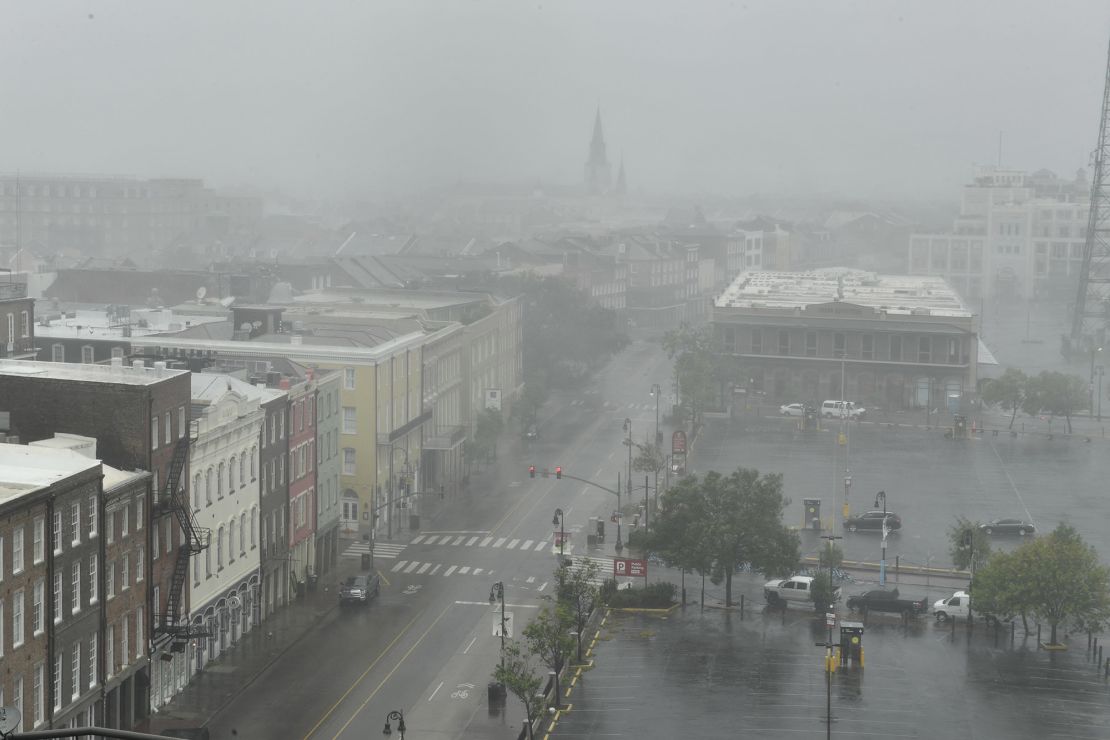
“This is a different city than it was August 28th 2005, in terms of infrastructure and safety,” Ramsey Green, New Orleans deputy chief administrative officer for infrastructure, told reporters Saturday at a news conference ahead of Hurricane Ida’s landfall.
Green called the city’s levee system “an unprecedentedly powerful protection for the city,” which has three lines of defense: the coast, the wetlands and the levee system.
“From that perspective, we need to be comfortable and we need to know that we’ll be in a much better place than we were 16 years ago,” Green said. “That said, if we have 10 to 20 inches of rain over an abbreviated period of time, we will see flooding. We don’t know at this moment – we see 15 to 20 inches over 48 hours or less, and we can handle it, depending on the event.”
New Orleans Emergency Management Services announced it has suspended all operations as Ida continues to blow through.
“NOEMS operations have been suspended due to dangerous winds,” the department said in a tweet Sunday.
NOEMS said operations will resume once conditions are safe for first responders.
Airlines canceled all flights arriving to and leaving from Louis Armstrong New Orleans International Airport on Sunday, the airport said.
CNN’s Matt Egan, Gregory Lemos, Brandon Miller, Travis Caldwell, Michael Guy, Aya Elamroussi, Jackson Dill, Ed Lavandera, Amanda Jackson, Chris Boyette, Paul P. Murphy, Melissa Alonso, Hollie Silverman and Haley Brink contributed to this report.



